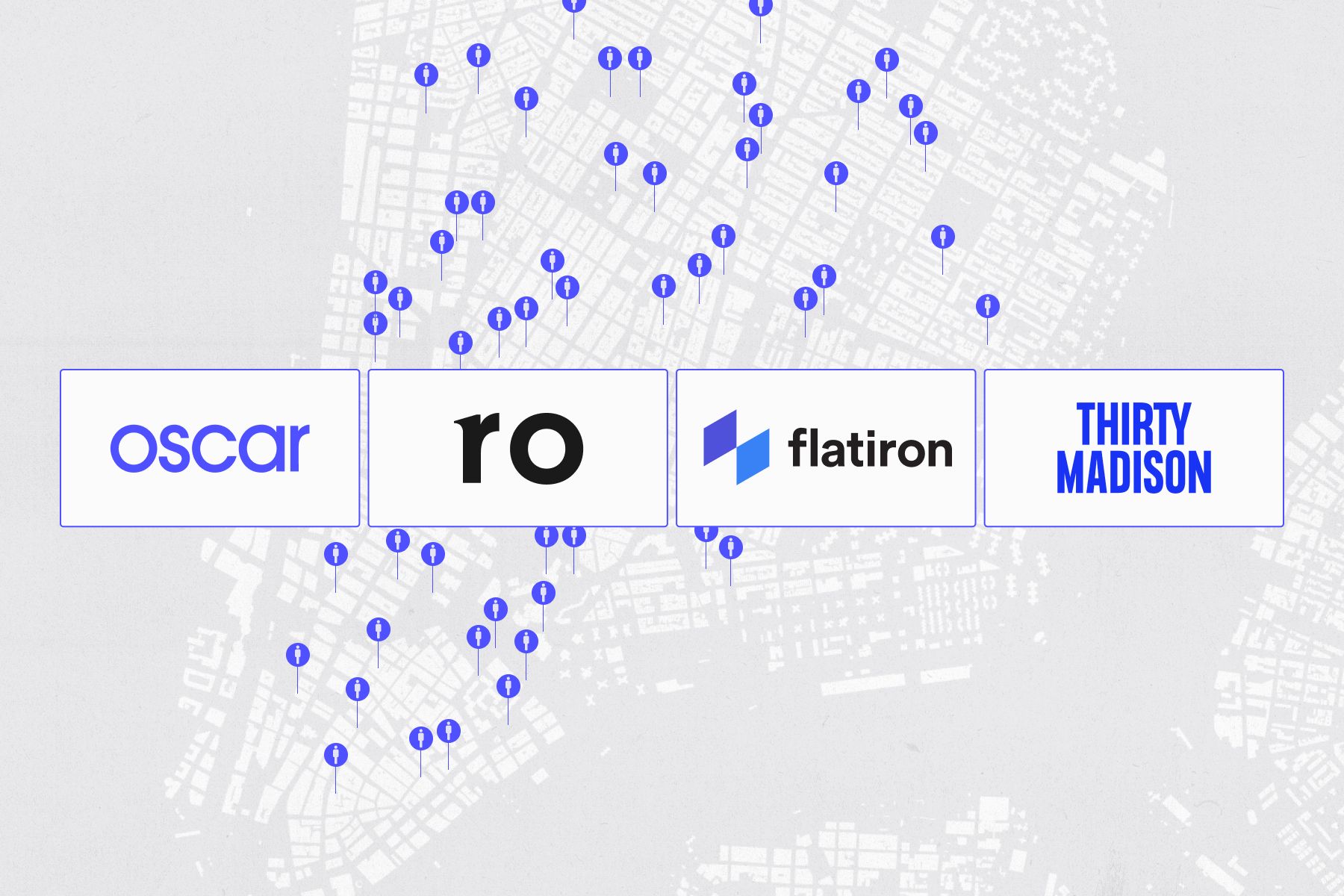Automating the Back Office: How AI is Transforming Professional Services

In the late 2010s, Ross McNairn was VP of Product at a European startup. One night, he got a call from the company’s general counsel. The lawyer, a “phenomenally bright bloke” who McNairn says could have been a partner at any top law firm, sounded tired. As they went over a routine privacy issue, McNairn could hear the man’s sense of defeat rising on the other line. Finally, he interrupted him. “Are you okay, mate?” he asked.
“I’m slammed,” the lawyer said. “I’m trying to close a round. I’ve got procurement screaming at me with five baby contracts that could be checked by any 10-year-old. And as much as I love talking to you, it’s almost bedtime and we’re stuck on some basic GDPR stuff.”
It’s a story McNairn says he’s seen in every organization he’s been a part of — the overworked GC performing a “ridiculously difficult and thankless job, context-switching every hour, doing things way below their pay grade.” And it’s not limited to legal work. Highly trained professionals in accounting, audit, compliance, and other back-office roles have spent the majority of their working lives doing manual, repetitive tasks: searching for documents, filling out forms. While these forgotten workers chip away at never-ending to-do lists, businesses suffer. Deals get blocked. Risk goes unnoticed. Client relations slip. Innovation stalls.
Thankfully, that’s changing with the rise of generative AI. Over the past few years, we’ve seen a new wave of tools emerge not only promising to transform back-office workflows, but marking a shift towards “services as software.”
This evolution is fundamentally changing how professional services are delivered, with AI automating and scaling tasks that were once seen as too complex, too low-margin, or too operationally intensive to scale.
In legal work, we see this with tools like Casetext, Ironclad, and DraftWise automating research, contract management, and drafting tasks. In finance, products like DataSnipper, AuditBoard and Black Ore are taking the grunt work out of audits and compliance. These tools are emerging from all corners of the market, from new entries to incumbents building their own solutions, acquiring startups, or integrating AI into existing tools. With the ability of LLMs to query unstructured data and AI to automate menial tasks, we’re witnessing a transformation of the back office that will reshape industries and improve lives.
The timing couldn’t be better. In the U.S., more than 300,000 accountants and auditors have left the profession over the past two years, a 17% decline. The exodus — which includes younger accountants and mid-career professionals, as well as baby-boomer retirements — is the result of years of inadequate pay, limited opportunities for career advancement, and grueling hours during peak seasons. The shortage is even worse when you consider the decline in new accounting graduates — a “pipeline problem” that Randy Johnston of accountancy education group K2 Enterprises says has gotten steadily worse over the past 25 years.
“If you have a choice between engineering or accounting as a student, and you look at the dollars, the lifestyle, the innovation and excitement of one versus the dryness of the other,” Johnston says, “which one are you going to choose?”

Vidya Peters, CEO of DataSnipper
Companies have responded by offering six-figure starting salaries and more remote-work opportunities for accountants and auditors, but as DataSnipper CEO Vidya Peters says, “It’s an impossible equation to solve.” Peters notes that as new government regulations and compliance measures come into effect, the demands on back-office professionals — and demand for these roles, generally — have also increased. “Businesses are becoming more complex, regulatory requirements are increasing,” she says. “There’s more and more data that needs to be checked, but still the same number of hours in a day.”
Law firms, in a similar effort to retain talent and meet demand, have raised salaries for junior lawyers by as much as 20% year over year, but it’s a stopgap at best. In-house lawyers, meanwhile, find themselves perennially underwater, faced with mounting workloads and disgruntled colleagues who see them as bottlenecks, slowing down deals.
“These lawyers spend all day trying to do the right thing, protecting the business from risk, and people shout at them for being a blocker,” McNairn says. “No GC went to law school and got $200,000 of debt just to do mundane contract review and get yelled at half the time.”

Ross McNairn, co-founder and CEO of Wordsmith
McNairn, a lawyer himself who pivoted to engineering after seeing what a law career had in store, founded Wordsmith partly with a vision of making it easier for in-house teams to access legal services. But he says the company’s AI-powered legal assistants are as much about accelerating deal flow and unclogging the legal bottleneck as they are about improving the lives of lawyers, creating more time for work that’s genuinely fulfilling, and making sure they’re appreciated for their efforts.
Today, McNairn is part of a new generation of founders who are transforming professional services through deep industry knowledge, AI acumen, and commercial expertise. Together, they’re demonstrating the power of technology to provide breakthrough solutions for back-office professionals, and making a case for why these forgotten workflows provide the perfect arena for AI innovation.
A revolutionary moment
As an engineering lead at Palantir, James Ding saw the impact big data could have on organizations in oil and gas, automotive, manufacturing, and other sectors. When he and colleague Emre Ozen decided to start their own company, DraftWise, they knew they wanted to develop similar technology and make a similar impact, but they kept an open mind about the types of solutions they would build and what exactly that impact would be.
“I wasn’t married to one industry,” Ding says. “All I cared about was finding a place where we could take things from 0 to 100 and help as many people as possible.”
They called and sent Zoom invites to everyone they knew, reading from a list of questions geared at finding the right opportunity. What do you do for work? Why does it matter to you? What gets you promoted? What gets you fired? They were trying to tease out discrete problems that could be solved through big data and generative AI.
They interviewed nearly 100 lawyers (including their eventual co-founder, Ozan Yalti, who practiced for 10 years at Clifford Chance). Ding heard lawyers talk about work in a “really crass and pessimistic way.” Many described their goal as suffering long enough to become a senior lawyer and then go in house, where their lives might improve. Others described a willingness to endure the pain for as long as it took to make partner, so at least they would have money and status. The more Ding got to know these lawyers and the problems they faced, the more clearly he saw the opportunity to help a market starved for new technology.
For Andy Cooke, General Counsel at TravelPerk, AI is breathing life into workflows that haven’t changed in 20 years. While the 1980s and 1990s saw new tools radically transform legal work — Microsoft Word, email, Google, the BlackBerry — Cooke says innovation stagnated after the release of DocuSign in 2003. Today, his team is using AI to speed up (or eliminate) internal processes and scale access to information. He encourages them to think proactively about how technology can move the legal value proposition upstream — from repetitive tasks to more creative, value-driven work. In his view, the stagnation of innovation in legal isn’t just a lack of new tools; lawyers have failed to consider customers and their evolving needs and expectations when delivering their service.
Simplification and automation can deliver 95% of what AI can offer right now. AI has that magic additional piece that makes you clap your hands like a happy baby, but so much can be gained just by thinking critically and stripping away what’s unimportant. Once you start to focus on things that impact risk profile — things that really create value for your customers — then you’re doing the job you actually went to law school to do.Andy Cooke,
General Counsel, TravelPerk
Automation will enable a shift from reactive to proactive work across all professional services, with the result being time and cost savings, better quality of life, and a higher level of service. Randy Johnston, who for 40-plus years has studied technology’s role in accounting, says AI’s ability to automate data ingestion and repetitive tasks will give accountants more time for high-value advisory and consulting work.
“Compliance is rearview-mirror, reactive work,” Johnston says. “Advisory is front-windshield, looking forward. What clients want are solutions that make them more profitable, that help them work less hours — things that are the goal of every business owner.”
Johnston gives the example of his own tax return. Without AI and automation, he and his wife would spend 12 hours gathering documents before sending them to the firm that prepares their return. Once there, it would pass through multiple stages and stakeholders — 16 hours for preparation, two hours for initial review, two hours for partner review, and another two hours for quality review — plus a few hours of administrative assembly. With AI, he says, virtually all of these hours and steps can be eliminated, with the exception of the partner review.
Along with creating more time for high-value advisory work, AI and automation will eliminate the need for outsourced labor. This is significant at a time when 42% of U.S. accounting firms are turning away work due to staff shortages, and 25% are outsourcing work to countries like India and the Philippines (Johnston estimates the latter number would have been less than 10% a few years ago). Rising labor costs in these countries, combined with the additional management overhead and mandatory disclosures required of U.S. firms, have made offshoring a losing, albeit necessary proposition. Now, with the help of technology, firms can bring their operations back onshore, increasing profits and reducing friction.
“It’s clear this is a revolutionary moment,” Johnston says. “AI will accelerate capabilities and reduce the amount of labor required to perform the same level of work. Accountants who use AI will outperform accountants who don’t use AI, and they’ll do it with less effort.”
“We’re asking people to change a lot”
Vidya Peters can’t see auditors going away any time soon. In a society built on trust, she argues that auditors (“stewards of trust,” she calls them) play an essential role in ensuring that the picture of society we see when we step out the door — when we wait for a bus to arrive on time, when we read the ingredients on a box of cereal — is what it actually appears to be.
Peters also believes audit work is more nuanced than people understand, all about applying judgment, interpreting rules and data, assessing risk. Auditors spend a lot of time building trust with clients, working to understand their businesses and the qualitative aspects of how they make decisions. She says auditors operate in a “world of gray,” and that even with tools like DataSnipper offloading manual tasks, auditors must constantly use their judgment to create a nuanced picture and give clear advice.
“I don’t think it will ever be acceptable for the SEC to call an LLM to vouch for an audit they signed off on,” Peters says. “That’s ultimately the value of an auditor — it’s their name, their expertise, their reputation they’re putting on the line.”
While generative AI has seen rapid advancement, we’re still early in its development curve. Because today’s ingestion tools aren’t completely accurate, human intervention is required to review and verify their work. Even as the technology improves, it’s likely that professional services will require a human in the loop, given the high stakes for businesses and zero tolerance for risk. Like DataSnipper, the most successful tools will be designed to empower professionals, not replace them.
At Remote, a global HR platform, a team of 40 lawyers benefits from an internal chatbot designed to answer legal questions from sales and customer success. The company’s Chief Legal Officer, Sam Ross, is bullish on AI’s potential but cautious about using it for anything risk-related — especially where non-lawyers are involved.
“The best use case is answering the simplest, lowest-risk questions, where the emphasis is on getting people answers quickly, without involving a real lawyer,” he says. “That frees us up to work on the high-profile, risky cases where we’re truly needed.”
For most companies and firms, the biggest challenge to AI adoption is incorporating new technologies into systems and workflows that for decades have remained largely unchanged. In-house teams like Ross’s are faster to adopt new solutions and more likely to think about ROI, but big law firms and public practice CPAs move slower and often struggle with change management. Part of the reason, Randy Johnston says, is that firms tend to operate less as businesses and more as partnerships, with each partner having their own workflow. Even in corporate firms, different offices will have different workflows, usually dictated by the people working in them, who are naturally resistant to change.
“We’re going from an unknown steady state to a new, different state,” Johnston says. “We have to get buy-in. We have to get training. We have to change our workflows, our billing models, the way we interact with clients. We’re asking people to change a lot.”
Success in deploying technology, Andy Cooke says, is “a function of the environment in which it arrives.” He recognizes the privilege of working in a tech-first environment like TravelPerk, but he worries about a “dark timeline” where legal decision-makers add complexity or friction to processes, and actively fight against technology, in the false belief that this will protect them from disruption.
“If you’ve gone from big law to big company to boardroom, you might not see that the platform is burning,” Cooke says. “But it is. Legal leaders need to openly discuss the future state of legal — by which I mean the value proposition of lawyers, and improving the experience of legal end users in all contexts. Let’s not wait for that future state to be imposed on us.”
At Orrick, a top global law firm, Vedika Mehera spends every day working to prevent Cooke’s dark timeline from happening. As director of Orrick Labs, which develops custom solutions for the firm’s clients and lawyers, Mehera’s team has provided over 100 tools to lawyers, more than half of which are driven by AI. Since the initial wave of LLMs were released, they’ve leveraged internal knowledge and proprietary data to create point solutions in-house, relying on software vendors with large R&D budgets to build products for more complex use cases. As time goes on and technology improves, she expects the firm to buy more solutions rather than develop them in house.
“We have great relationships and are very collaborative with vendors,” she says. “We’re always giving them intel and insight, helping them refine their roadmaps. We want them to build the best products because our lawyers will use them and that makes us better.”
The opportunity for founders
At Index, we’ve always invested in people first and foremost. With AI creating a new emphasis on research and technical ability, we believe our thesis — that it’s about who you are, not just what you do — takes on even greater meaning.
In professional services, there’s no question that a deep grasp of AI will be required to build cutting-edge solutions. But the most successful companies must also have domain expertise and intimately understand the back-office problems they’re developing solutions for.

The DraftWise founding team: Emre Ozen, James Ding, and Ozan Yalti
For James Ding, building DraftWise would be impossible without co-founder Ozan Yalti. An experienced lawyer, Yalti is the ultimate beta user — someone who can share his pains and offer regular feedback. This is especially important when developing solutions for lawyers, whose busy schedules and focus on billable hours make getting feedback difficult.
“We have a lawyer on staff who we can go to and say, ‘What’s your opinion on this? What represents the universal lawyer experience?’” Ding says.
My colleague in Index’s New York office, Susana Rojas, works with DraftWise and has pointed out that they're a great example of AI that fits into existing workflows. Instead of requiring large firms to fundamentally change the way they work, lawyers can access the tool directly via Microsoft Word, using it to understand deal history to draft and review new contracts.
It’s been valuable comparing notes with Susana on companies I work with in Europe that take a similar approach. Consider DataSnipper, which offers another example of workflow-first development. Its algorithms automatically extract data, cross-reference it, and create a paper trail with citations in Excel. For a large global bank, preparing financial statements for a public earnings announcement used to take a week or more. With DataSnipper, that manual work is done in seconds, without affecting the audit team’s workflow.
Any new AI solution must solve a true pain point and align with users’ preferences and needs. That includes making sure it can be deployed in the right modalities and meets the infrastructure needs of different businesses, whether it’s the cost-efficiency and scalability of SaaS, or the security and compliance benefits of on-premise or VPC solutions.
Within the broader category of professional services, we’re seeing verticalized solutions and interesting pockets emerge. Ankar is a good example, with specialized AI models geared at assessing patentability, detecting infringements, and reducing litigation risk. Abidia is another, streamlining and automating the traditionally manual process of transfer pricing.
As we shift from software as a service to services as software, founders have an opportunity to tap into existing services budgets rather than ask customers to carve out new software budgets. Many companies, especially in legal and accounting, already have significant spend allocated to services. For startups, this can mean easier access to budgets, as they align their offerings with existing financial structures rather than trying to create a new line item for software in companies where users might not be sophisticated software buyers.
The future of AI in professional services is bright, and the market opportunity is massive. As costs and demand for professional services soar, firms are under increasing pressure to improve efficiency and reduce spend. Technology provides the answer, and AI and automation promise to bring these forgotten workflows into the modern day.
Published — Sept. 12, 2024

